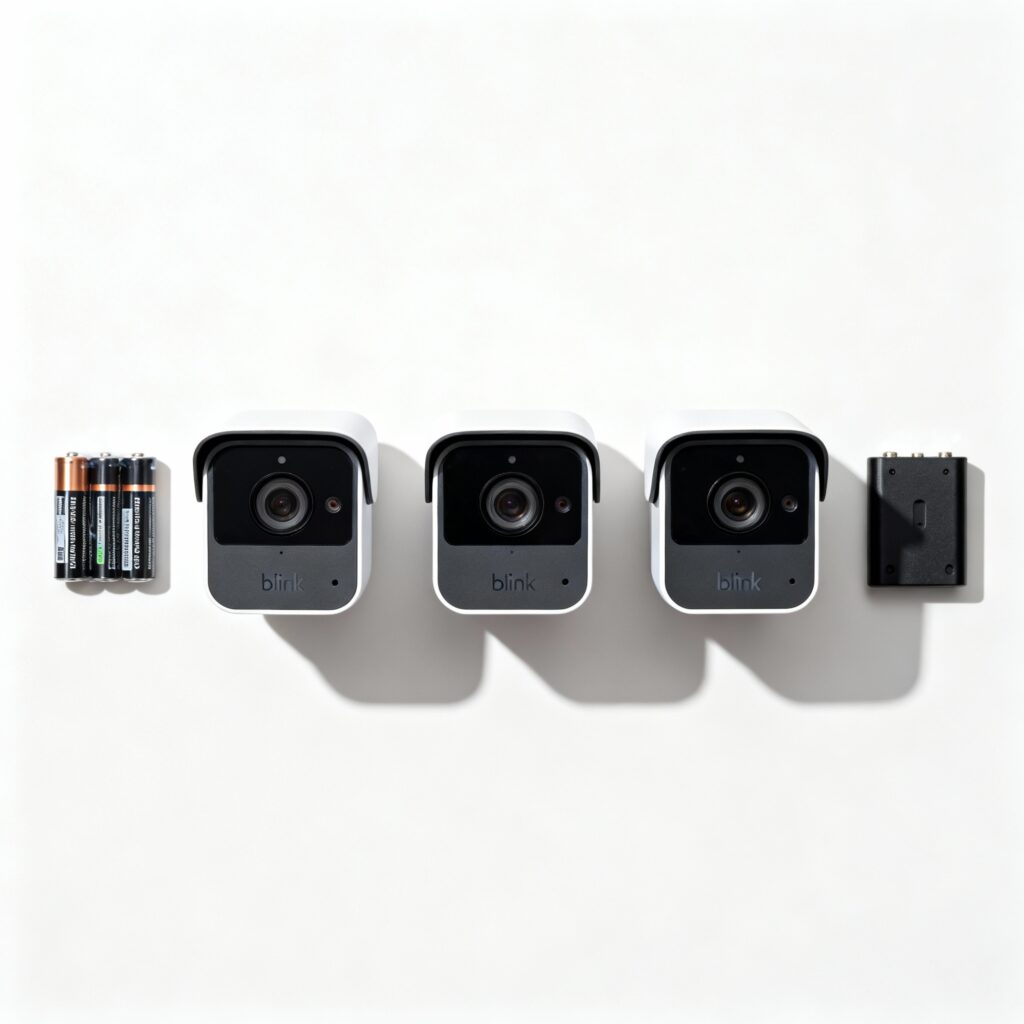When it comes to powering your Blink Outdoor cameras and doorbell, choosing the right batteries can make all the difference in performance, convenience, and cost. Here’s what I learned after research and testing — a quick guide to help you decide once and for all.
Single-Use vs Rechargeable Batteries
Should you go for the convenience of single-use or the savings of rechargeables?
- Single-Use Lithium AA (1.5V):
Batteries like Energizer Ultimate Lithium last a long time (about 9 months in my cameras). They’re reliable and maintenance-free, but replacements add up over time. Blink officially recommends these for maximum reliability and to ensure warranty coverage, as their voltage is stable and they’re less prone to sudden drops in power. - Rechargeable Lithium AA (1.5V):
Rechargeables offer flexibility — with a recharge every 4 months, they save money and are eco-friendly. They require upfront investment and charging time but pay off in the long run.
Tradeoff: If you want zero hassle and long runtime, single-use lithium is great. If you prefer savings and don’t mind charging, rechargeables make sense.
1.2V vs 1.5V Rechargeable Batteries
What’s the deal with different voltages, and does it matter for Blink?
- 1.2V NiMH Rechargeables:
These are common and work in many devices, including Blink cameras, but may result in shorter runtime or inconsistent performance in some Blink models. Blink officially recommends against them due to potential reliability issues. - 1.5V Lithium-ion Rechargeables:
These provide a slightly higher voltage, closer to single-use lithium batteries, for more consistent power and longer runtime. My research found that 1.5V lithium-ion rechargeables work well with Blink cameras and other devices like the Canon EX 580 II flash.
4-Pack vs 8-Pack Batteries
How many batteries should you buy?
- 4-Pack: Fits immediate needs to replace batteries in current devices.
- 8-Pack: Adds extra batteries for rotation — swap fresh ones in while charging the others — minimizing downtime. Having spares can be a lifesaver if a camera goes offline unexpectedly.
I chose the 8-pack for convenience and backup.
Quick Comparison Table
| Battery Type | Voltage | Lifespan (per charge) | Cost Over Time | Eco-Friendly | Hassle Level | Works with Blink? |
|---|---|---|---|---|---|---|
| Single-Use Lithium (Energizer) | 1.5V | 6–12 months | High | No | Low | Yes |
| Rechargeable NiMH | 1.2V | 2–4 months | Low | Yes | Medium | Sometimes |
| Rechargeable Lithium-ion | 1.5V | 3–5 months | Lowest | Yes | Medium | Yes |
Which Brand I Chose
After comparing options, I went with the RayHom 8-Pack Rechargeable AA Lithium Batteries (1.5V, 3700mWh) with an 8-slot charger — great capacity, long cycle life (up to 1600 cycles), and a typical price of $20.89 before any discounts.
Funny Battery Lifespan Comparison
Another brand claimed 2500 cycles, or about 800 years under the same math — but it cost more.
My practical side laughed and said:
“If I live 500 years, the RayHom batteries are plenty — and they save me money!”
Final Thoughts & Call to Action
Choosing batteries depends on your priorities: ease vs cost savings, voltage compatibility, and backup planning. Rechargeable 1.5V lithium batteries in an 8-pack hit the sweet spot for Blink cameras — reliable, cost-effective, and ready for any power needs.
Have you tried different battery types in your Blink cameras? Share your experiences or questions below!

